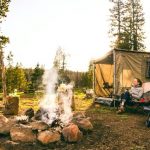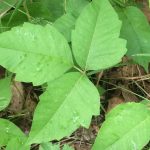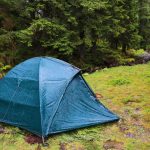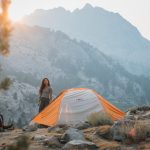Campfires have brought people to the woods for centuries, as they are the centerpiece for endless fun, stories, and warmth in cooler temperatures. Before embarking on an adventure, it is important to learn how to build a campfire so you can impress your friends and have a source of heat and light when the sun goes down.
Check Fire Restrictions
If you are in a designated campground, be sure to check with the campground host before making a fire. Campfires may be prohibited if the area you are camping is going through a severe dry period. If you are camping in an undeveloped site, check the website of the agency that administers the land for any fire restrictions. Most of the time the agency will be either the U.S. Forest Service or the Bureau of Land Management. Also, be sure to check if a campfire permit is required.
Evaluate the Site
Be sure to evaluate the site before starting a fire. If the site is bushy or has low-hanging branches, keep your fire small or skip it altogether. In dry conditions, fly-away embers could easily ignite a wildfire. Also, be sure you are the proper distance from water sources before building your campfire.
You’ll Need a Fire Ring
Almost all designated campgrounds have some version of a fire ring. It is important to use the fire ring as it will lessen your impact and keep your fire contained. Many fire rings also come with a built-in grate to cook on which provides even more incentive to use it.
When camping at an undeveloped site, use an existing fire ring if one has been left behind. It is only recommended to build a new one in emergency situations. If you have to build a new one, the base of your fire ring should be sand or gravel. This is easy to find if you are camping at the beach. You may have to search a little harder if you are in the woods. Choose your site conscientiously as the intense heat from a fire will sterilize healthy soil.
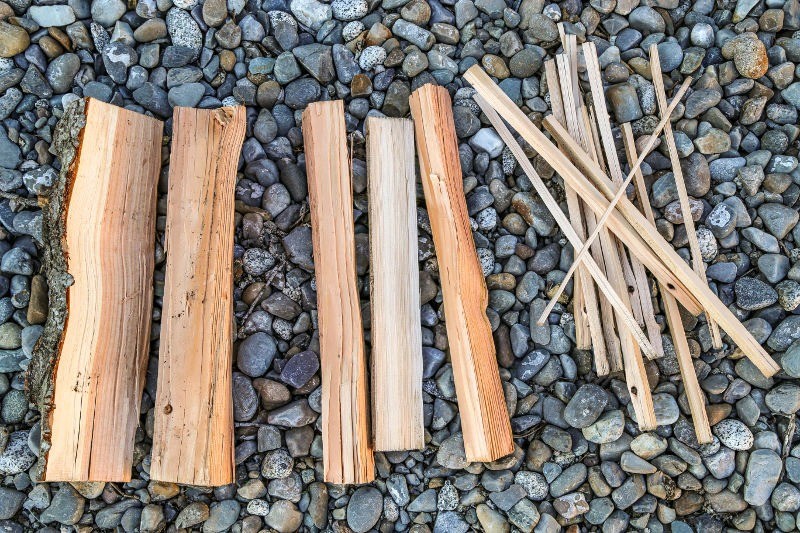
Gather Fire Wood
When learning how to build a campfire, it is important to understand the three types of fuel needed:
- - Tinder
- - Kindling
- - Firewood
Tinder is what you light first and is made up of small twigs, dry leaves, dry pine needles, or forest duff. Kindling is then lit by the tinder and consists of small sticks, typically less than one inch around. Lastly, firewood is lit by the kindling and consists of any larger piece of wood. Firewood is what will keep your fire going all night long.
It is important to use firewood that comes from the area you are camping in. Don’t bring your own wood if you are traveling from more than 50 miles away. This is to avoid introducing troublesome bugs into the forest. Campgrounds may even ban bringing your own firewood regardless of the distance you travel if they’ve had trouble with bugs in the past. Nearby stores often carry firewood, and sometimes campground hosts offer bundles of firewood or kindling for sale. You can always call the campground or local ranger office in advance for more information and advice.
If you forage for firewood, gather only downed wood far from your site. Never cut down live trees or break off branches from standing trees, even if they’re dead. Wildlife in the area may use the dead branches to make their nests or homes.
Also, do not gather or burn pieces of wood thicker than a baseball bat. This is because thick chunks of wood usually don’t burn completely through. Many campers will leave these half-burnt pieces of wood laying around after they’ve left their campsite, which can be a huge eyesore.
Building the Campfire
Teepee
The teepee is arguably the best structure to build when learning how to build a campfire. The teepee not only creates the perfect amount of airflow, but it also allows the fire to climb up the kindling as it begins to ignite. It is also quick and easy, as you don’t have to search for the perfect size kindling like some of the methods below. To start, place a few handfuls of tinder in the middle of your fire ring. Then, place your kindling around the tinder, building a teepee. Once the fire is going strong, you can add larger logs as needed.
Eventually, your teepee will collapse, but your fire should be blazing at this point. When this happens, be sure to re-stack the logs however you’d like. The structure doesn’t really matter at this point because the fire is already going strong.
Log Cabin
The second best structure to build when learning how to build a campfire is the log cabin. The concept is similar to the teepee, the only downfall is that it takes a little longer to build. This is because you must have different sizes of kindling/firewood for each layer. Also, if you don’t build the walls close enough together you may find it hard to get the wood to ignite.
To start, place two larger pieces of firewood parallel to each other and with some room in between to form the base of your structure. Then, place two slightly smaller pieces on top and perpendicular to form a square. Continue to add a few more layers, with each getting a little bit smaller as you go. Be sure to place a couple of handfuls of tinder inside the square after you get your first couple of layers in place. Also, don’t forget to leave enough space between the logs so the fire can get plenty of oxygen. Finally, place a layer of kindling and tinder across the top.
Pyramid
The last structure you can build when learning how to build a campfire is the pyramid. Start with three or four of your largest logs side-by-side on the bottom layer. Then add a second layer of slightly smaller logs perpendicular to the ones below. Continue getting smaller as you go up. Once all the logs have been stacked, place your tinder on top.
The reason this method isn’t as great at the others above is that the fire has to start from the top of the pyramid and work its way down to the bottom logs. It may take longer, if at all for the fire to ignite the bottom logs because heat rises.
Lighting the Campfire
Light the tinder with a match or lighter. If you are having trouble getting the tinder to light, use a fire starter. It is always a good idea to carry waterproof matches and fire starter with you if you are miles from civilization.
After lighting the tinder, blow lightly at the base of the fire to provide it with more oxygen. This will help increase the intensity of the flame and further ignite the wood. As the fire burns, move embers to the center so they burn completely. Eventually, the embers will turn into white ash.
Extinguish the Campfire
The best way to extinguish your fire is by pouring water on it. Covering a fire with dirt or sand is not a good solution. This can insulate the coals, which can become uncovered later and ignite a wildfire.
You will most likely need to stir the ashes and apply water multiple times. The ashes should be cool to the touch. Do not leave the campsite until you have confidence that the fire is extinguished.
Clean up the Campfire
You can throw trash items into the fire only if you know they will burn and turn to white ash. As a note, do not attempt to burn plastic, cans, or foil as you will not succeed. If you accidentally throw the trash into the fire and it doesn’t fully burn, collect the remains once the fire is extinguished and put it in a trash receptacle. If you are camping in an undeveloped site, be sure to pack out any trash found in your fire ring.




